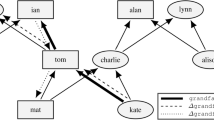Abstract
The feasibility of using an induction algorithm to discover heuristic rules for wheelchair equipment selection is investigated. Syntactical rules for two description languages (one to describe the disabled client and another to describe wheelchair equipment configurations) are presented. These languages allow the rulebase developer to describe training instances (examples) to the computer in an intelligible way. An induction learning algorithm is used to classify these training instances, thereby producing a decision tree. Heuristic rules can then be extracted from the tree and placed in a rulebase for an expert system called LEADER. LEADER is being developed to aid a wheelchair prescriber in the equipment selection process. There are two important objectives of this research: (1) to reduce the time and facilitate the development of an intelligent expert system rulebase by extracting knowledge embedded within existing examples and (2) to provide the expert system with the ability to learn new rules autonomously. The ability to learn makes the rulebase dynamic; the initial rulebase would be augmented with new rules as additional examples are provided to the system while it is in clinical use.
Similar content being viewed by others
Explore related subjects
Discover the latest articles, news and stories from top researchers in related subjects.References
Bertrand, K. V., Napper, S. A., and Ezell, P. M.: An expert system to aid in the prescription of electronic augmentative communication devices, inProc. 11th Annual Internat. Conf. IEEE Engineering in Medicine and Biology Society, Vol. 6, IEEE, New York, NY, 1989, pp. 1861–1862.
Cios, K. J. and Liu, N.: A machine learning method for generation of a neutral network architecture: a continuous ID3 algorithm,IEEE Trans. Neural Networks 3(2) (1992), 280.
Durkin, J.: Induction via ID3,AI Expert 7(4) (1992), 48.
Hodges, J. E., Cordova, J. L., Graves, W. H., and Talor, C. R.: An expert system for the recommendation of visual aids,J. Intelligent Robotic Systems 4 (1991), 99–107.
Kondraske, G.: Rehabilitation engineering: towards a systematic process,IEEE Eng. Med. Biol. Magazine 10 (1988), 11–15.
Lee, K., Thomas, D., Balfour, L., and Parnes, P.: An assessment protocol for the selection of access systems for persons with physical disabilities, inProc. Internat. Conf. Assoc. Advancement of Rehabilitation Technol, RESNA Press, Washington DC, 1988, pp. 6–7.
Liang, T. P., Chandler, J. S. and Han, I.: An empirical investigation of some data effects on the classification accuracy of probit, ID3 and neural networks,Contemporary Accounting Research:J. Can. Acad. Accounting Ass. 9(1) (1992), 306.
McFarland, S. R.: Seeking information about wheelchair evaluation: a call for action,J. Rehabilitation Res. Develop. Clin. Suppl. No. 2, Choosing a Wheelchair System (1990), 86–87.
McLaurin, C. A.: Current directions in wheelchair research,J. Rehabilitation Res. Develop. Clin. Suppl. No. 2, Choosing a Wheelchair System (1990), 88–99.
Phillips, L. and Nicosia, A.: An overview of wheelchair selection with reflections past and present of a consumer,J. Rehabilitation Res. Develop. Clin. Suppl. No. 2, Choosing a Wheelchair System (1990), 1–2.
Quinlan, J. R.: Induction of decision trees,Machine Learning 1 (1986), 81–106.
Quinlan, J. R.:C4.5 Programs for Machine Learning, Morgan Kaufmann, San Mateo, CA, 1993.
Voland, G. and Callahan, S. M.: Effective wheelchair prescription via a computerized intelligent advising system, Internal Report, Department of Industrial Engineering and Information Systems, Northeastern University Boston, MA (1993).
Wheeler, J. C., Koppa, R., McDermott, M., Ellis, N. and Huchington, R. D.: A knowledge based system to suggest adaptive equipment for disabled drivers, inProc. 11th Ann. Int. Conf. IEEE Eng. Med. Biol. Soc. Vol. 6, IEEE, New York, NY, 1989, pp. 1861–1862.
Wilson, Jr, A. B. and McFarland, S. R.:Wheelchairs:A Prescription Guide, Rehabilitation Press, Charlottesville, VA, 1986.
Author information
Authors and Affiliations
Rights and permissions
About this article
Cite this article
Callahan, S.M., Voland, G. Extracting knowledge from examples: Induction of heuristic rules for wheelchair prescription. J Intell Robot Syst 14, 133–153 (1995). https://doi.org/10.1007/BF01559609
Received:
Accepted:
Issue Date:
DOI: https://doi.org/10.1007/BF01559609




